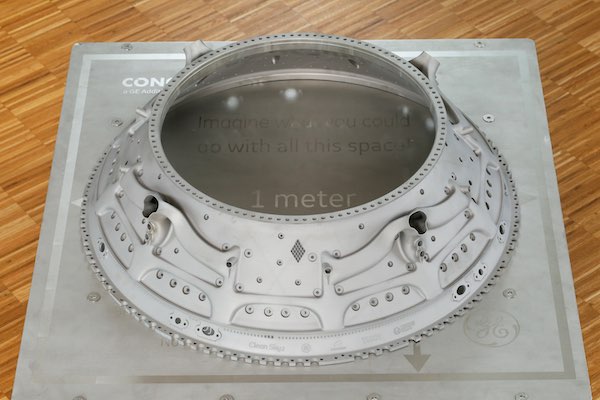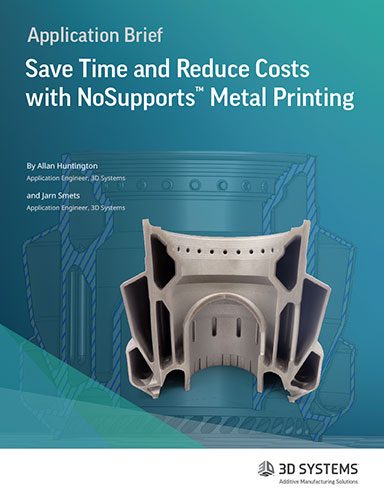GE Aerospace TURNS Up Lighter, Larger AM Parts
Consortium unveils Advanced Additive Integrated Turbine Centre Frame (TCF) casing which consolidates 150 parts into one.

The first-ever metal 3D printed TCF casing is one meter in diameter and was output in nickel alloy 718. Image Courtesy of GE Aerospace
Latest News
October 25, 2022
Large-scale and lightweight. A consortium took on those two core design objectives as it pushed forward on a project to create a Turbine Centre Frame (TCF) casing that could meet the needs of higher fuel-efficiency aircraft and that could be produced with large-scale metal AM.
With its partners, the Munich-based GE Aerospace Advanced Technology (GE AAT) established the Turbine Technology Project (TURN), tasked with accelerating technology maturation for future aerospace engines. The TCF project, dubbed MONACO, was part of GE AAT’s response to the call to arms for the European Union aviation sector to innovate higher fuel efficiency aircraft to meet the European Green Deal’s goals of reducing transport emissions by 90% by 2050 compared to 1990 levels. The Clean Sky 2 Program, and its successor Clean Aviation launched in December 2021, bring together key European industry players, subject matter experts, and academia to demonstrate and validate technologies capable of reducing carbon, nitrous oxide (NOx), and noise emissions by up to 30% compared to what was considered “state of the art” aircraft in 2014.
The GE AAT consortium, including partners TU Dresden (TUD), Hamburg University of Technology (TUHH), and Autodesk came together for a six-year R&D and engineering initiative, culminating in the large-format TCF casing design produced using GE Additive’s Direct Metal Laser Melting (DMLM) technology and nickel alloy 718. At one meter or more in diameter, the TCF casing is considered one of the largest additively manufactured parts produced for the aerospace industry, officials said.
Intended for narrow-body aircraft engines, the single-piece TCF casing was designed with reduced cost, weight, and manufacturing lead time targets to deliver a competitive business advantage. “We wanted to reduce the weight of the part by 25%, but also improve the pressure losses of the secondary airflow as well as a strong reduction in part count to improve maintenance,” said Dr. Günter Wilfert, GE AAT Munich’s technology and operations manager. In the end, the team was able to reduce weight by 30% while cutting manufacturing lead time from nine months to two and half months. In addition, over 150 parts that would comprise a conventional turbine center frame were consolidated into a single piece part with the consortium’s design, he said.
The TCF was a candidate for metal AM because of the emphasis on part consolidation, but also due the associated long lead times and costs associated with traditional manufacturing methods. The highly regulated aerospace industry has stringent requirements, and only a small number of casting and forging vendors are approved. The fact that a TCF isn’t a rotating part also contributed to metal AM’s utility for this application. The consortium also believes metal AM methods can be leveraged to improve existing and legacy engine center frames while the new design techniques could be transferred to scale turbine rear frame (TRF), low-pressure turbine casings, and turbine mid frames.
Key to the effort was the industry-academia collaboration. TUHH provided prototyping expertise and access to a GE Additive M2 machine; TU Dresden took responsibility for validation and building a dedicated test rig; and Autodesk optimized the design for AM (DfAM) process. Autodesk also took the lead on fluid and structural performance optimization on the TCF along with part consolidation. GE Additive printed the part using its A.T.L.A.S. machine.
For a look at GE AM's A.T.L.A.S. system, check out this video.
Subscribe to our FREE magazine, FREE email newsletters or both!
Latest News
About the Author
Beth Stackpole is a contributing editor to Digital Engineering. Send e-mail about this article to [email protected].
Follow DE




